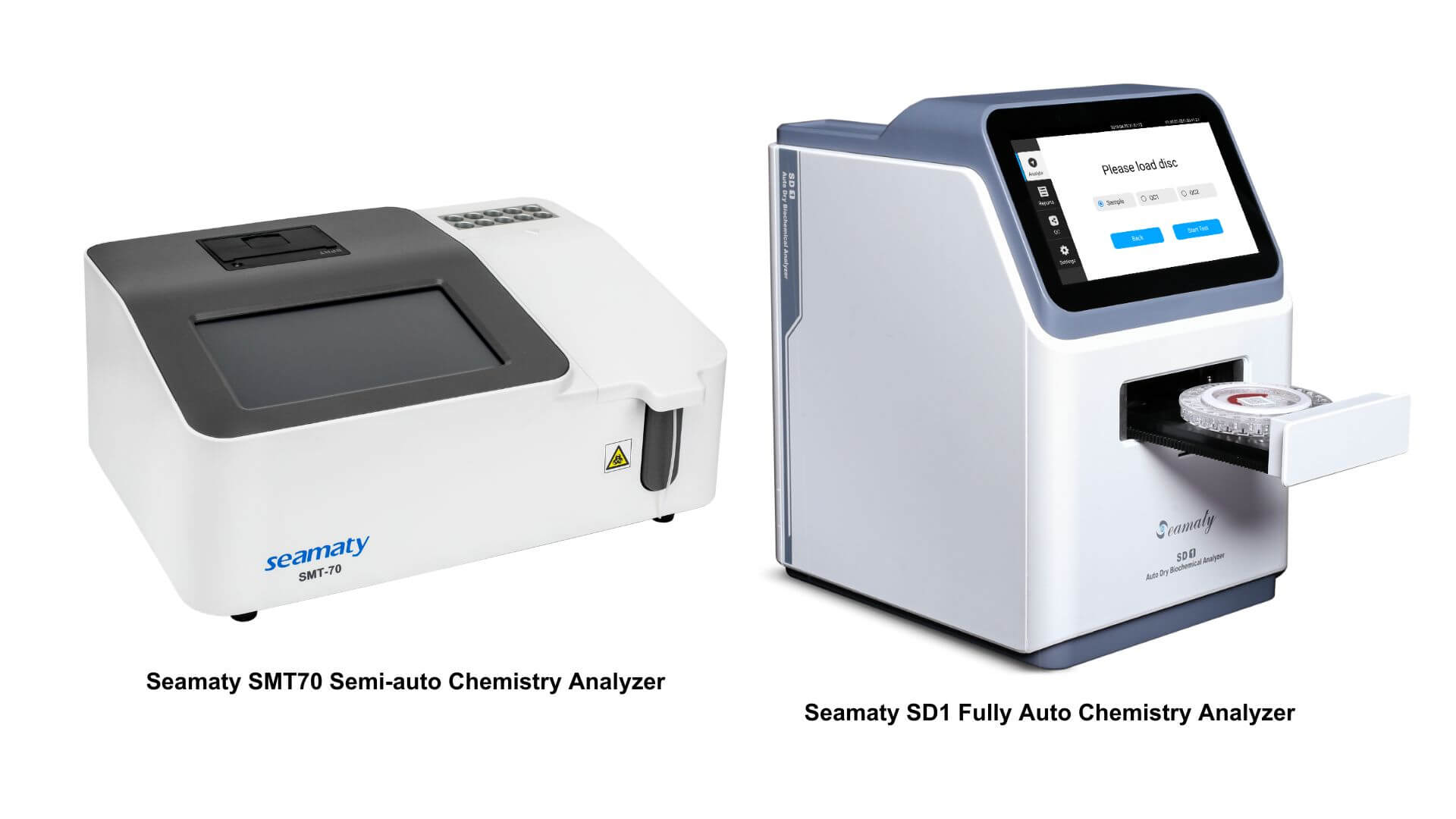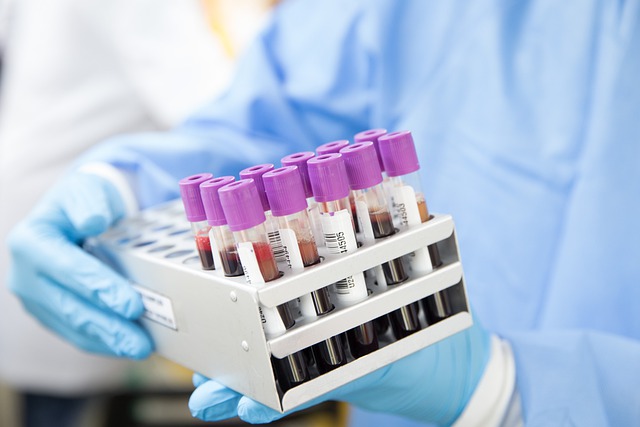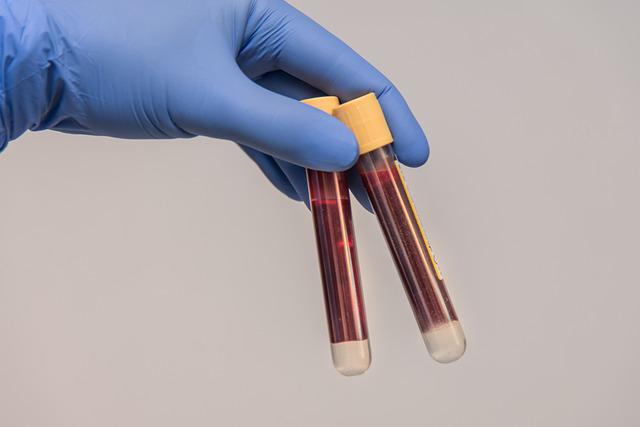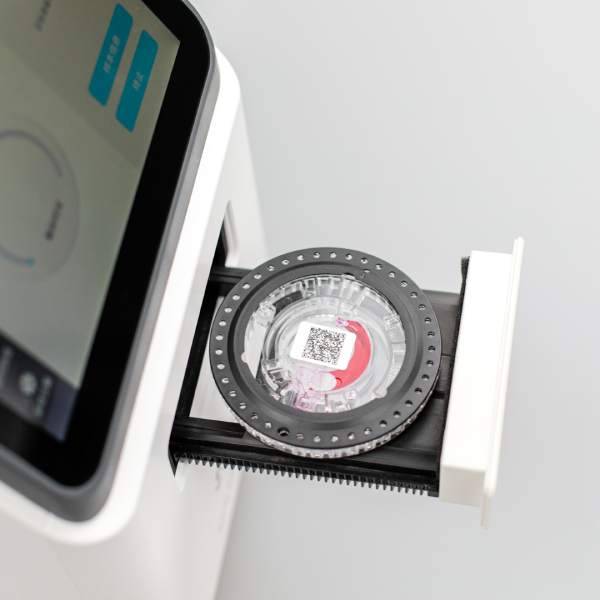release time:2023-07-17 11:23:03
Chemistry analyzers are vital tools in clinical diagnostics, enabling the detection of analytes related to diseases or drugs in various samples such as blood, plasma, urine, and cerebrospinal fluid. These analyzers can be broadly categorized into two types: fully automatic chemistry analyzers and semi-automatic chemistry analyzers. This article aims to explore the differences between the two and help buyers determine which option is the most suitable for their needs.
A fully automatic chemistry analyzer is a sophisticated laboratory instrument designed to automate the biochemical testing process on patient samples. By leveraging advanced technology, it delivers efficient and accurate results, thereby facilitating the diagnosis and monitoring of medical conditions. These analyzers are capable of performing a range of diagnostic functions, including routine analysis of albumin, creatinine, glucose, bilirubin, and inorganic phosphorus.
In contrast, a semi-automatic chemistry analyzer is a laboratory instrument that requires some manual intervention from the operator during the testing process. Although it has a lower sample throughput compared to fully automated analyzers, it is commonly used in smaller laboratories or point-of-care settings. This preference stems from considerations such as cost-effectiveness and user-friendliness.
One notable fully automatic chemistry analyzer is the Seamaty SD1. It is specifically designed for on-site testing and offers a range of advantages. With the ability to provide faster, easier, and more accurate medical diagnoses using just 0.1cc of whole blood, serum, or plasma, the SD1 enhances efficiency in diagnostic processes. Moreover, it incorporates cloud computing capabilities, allowing operators to make medical decisions remotely by accessing and interpreting test results. The SD1 also features a built-in centrifuge for sample preparation, QR codes for seamless sample identification, and real-time quality control mechanisms. Within a short 12-minute timeframe, the SD1 automatically prints the test results, further optimizing patient care.
Another noteworthy option is the Seamaty SMT70, an advanced in vitro diagnostic device catering to clinical diagnostic reference and scientific research needs. This analyzer is equipped with a circuit control system, an optical system, a colorimetric incubation system, a sampling system, an LCD screen, a touch screen, a built-in printer, and optional accessories such as a keyboard and a mouse. The SMT70 enables the detection of human proteins, lipids, sugars, enzymes, and inorganic elements in samples under laboratory environmental conditions. Its comprehensive capabilities make it an invaluable tool for various analytical purposes.
When deciding between a fully automatic chemistry analyzer and a semi-automatic chemistry analyzer, several factors come into play. The ultimate choice depends on the specific needs and circumstances of the laboratory or healthcare facility. Consider the following factors:
Laboratories with high sample volumes that demand efficient processing of a large number of samples may benefit from fully automatic chemistry analyzers with higher throughput capabilities. Conversely, laboratories with lower sample volumes and more flexible turnaround time requirements may find a semi-automatic chemistry analyzer sufficient for their needs.
Fully automatic chemistry analyzers offer a higher level of automation, minimizing operator intervention. This automation improves efficiency, reduces human error, and streamlines the testing process. However, if a laboratory requires greater flexibility, customization, or operator involvement in the testing process, a semi-automatic chemistry analyzer may be the preferred choice.
It is important to consider the budgetary constraints when choosing between the two types of analyzers. Fully automatic chemistry analyzers generally have a higher initial investment cost and may require more maintenance and consumables, making them more expensive than their semi-automatic counterparts.
The size and testing volume of a laboratory significantly influence the choice of analyzer. Fully automatic chemistry analyzers are typically suitable for larger laboratories with high testing volumes, while semi-automatic analyzers are commonly employed in smaller laboratories or point-of-care settings with lower testing volumes.
Semi-automatic chemistry analyzers are generally simpler to operate and require less technical expertise compared to fully automatic analyzers. If a laboratory has operators with limited technical skills or requires a more user-friendly instrument, a semi-automatic analyzer may be the better choice.
|
Factors to Consider |
Fully Automatic Chemistry Analyzer |
Semi-Automatic Chemistry Analyzer |
|
Throughput Requirements |
Higher throughput capabilities |
Lower throughput capabilities |
|
Automation Level |
Higher level of automation |
Requires more operator intervention |
|
Budget |
Cost over $15,000 |
Cost less than $2,000 |
|
Laboratory Size and Testing Volume |
Suitable for larger laboratories with high testing volumes |
Suitable for smaller laboratories or point-of-care settings with lower testing volumes |
|
Operator Skill Level |
Requires technical expertise |
Simplified operation and requires less technical skill |
Whether opting for a fully automatic chemistry analyzer like the Seamaty SD1, or considering the versatility of the Seamaty SMT70, selecting the most suitable instrument based on specific needs is crucial. By considering factors such as throughput requirements, automation level, budget, laboratory size, testing volume, and operator skill level, buyers can make an informed decision that aligns with their goals and resources.


2022-01-12
Automatic biochemical analyzer is an instrument used to detect chemical components in human serum. Biochemistry machines are mainly used to test liver function, blood glucose, lipids, kidney function and heart muscle.

2021-11-22
Common sample abnormalities in clinical laboratory medicine include hemolysis, lipemia and jaundice, and of course veterinary clinics are no exception. The overindulgence of pets has led to an imbalance in food intake, resulting in an increase in the number of pets with hyperlipidemia. Also, many of the pets that require biochemical testing are emergency cases. They do not undergo a 12-hour food evacuation period. Others undergo biochemical testing after intravenous injection of fat milk. These are some of the conditions that lead to an increased likelihood of lipemia in pet samples. Here we will learn more about lipemia samples.

2021-08-31
Biochemistry analyzers, belong to the category of clinical diagnostic analyzers. Biochemistry analyzer is a test device used to test human liver function, kidney function, blood glucose, blood lipids, cardiac enzymes and ions and other testing items. Biochemistry analyzers generally use venous blood as the test sample to determine potential human diseases through the testing of the above items.